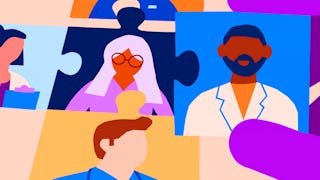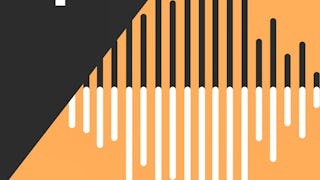This course introduces you to how Real World Data/Evidence can be used for pharmaceutical research and development and how it complements the evidence package for healthcare decision-making. If you are interested in applying data science to pharmaceutical research using data collected as part of routine clinical practice, this course is for you.


您将学到什么
Explain how real world data/evidence fits into the drug development process
Describe the three major types of bias that can be encountered in observational studies
Apply basic survival analysis techniques such as Kaplan-Meier plots and Cox Models to synthetic data.
您将获得的技能
要了解的详细信息

添加到您的领英档案
5 项作业
了解顶级公司的员工如何掌握热门技能

该课程共有5个模块
In this module we briefly introduce the phases in drug development and the evidence generation process to bring treatments to patients. We then exemplify how real-world data/evidence fits into the drug development.
涵盖的内容
5个视频4篇阅读材料1个作业1个讨论话题
In this module, we explore the limitations of real-world data. We discuss several sources of real-world data and explain their strengths and weaknesses. We then create clearer definitions of the types of bias that can be encountered when exploring real-world data.
涵盖的内容
3个视频1个作业2个讨论话题
In this module we explore study designs for observational data and methods to control for bias (systematic errors). We also mention concrete examples used in pharmaceutical research.
涵盖的内容
3个视频4篇阅读材料1个作业1个讨论话题
In this module we will design and conduct our own study using synthetic data to explore the concepts learned in modules 1-3.
涵盖的内容
5个视频1个作业1个讨论话题3个非评分实验室
In this module we consider the point of view of two critical stakeholders: regulators and payers. We see their position about real world data/evidence and its acceptance. We also explore specific use cases of how real world evidence has been used in practice.
涵盖的内容
3个视频4篇阅读材料1个作业2个讨论话题
提供方
从 Data Analysis 浏览更多内容
 状态:免费试用
状态:免费试用University of California, Davis
 状态:免费试用
状态:免费试用University of Colorado System
人们为什么选择 Coursera 来帮助自己实现职业发展




常见问题
To access the course materials, assignments and to earn a Certificate, you will need to purchase the Certificate experience when you enroll in a course. You can try a Free Trial instead, or apply for Financial Aid. The course may offer 'Full Course, No Certificate' instead. This option lets you see all course materials, submit required assessments, and get a final grade. This also means that you will not be able to purchase a Certificate experience.
When you enroll in the course, you get access to all of the courses in the Specialization, and you earn a certificate when you complete the work. Your electronic Certificate will be added to your Accomplishments page - from there, you can print your Certificate or add it to your LinkedIn profile.
Yes. In select learning programs, you can apply for financial aid or a scholarship if you can’t afford the enrollment fee. If fin aid or scholarship is available for your learning program selection, you’ll find a link to apply on the description page.
更多问题
提供助学金,







